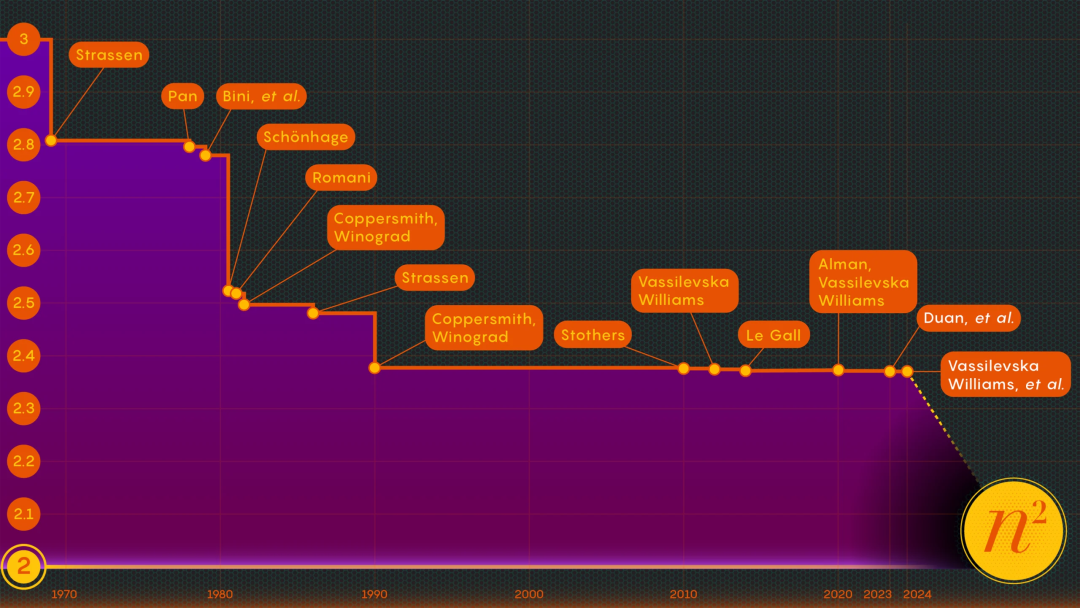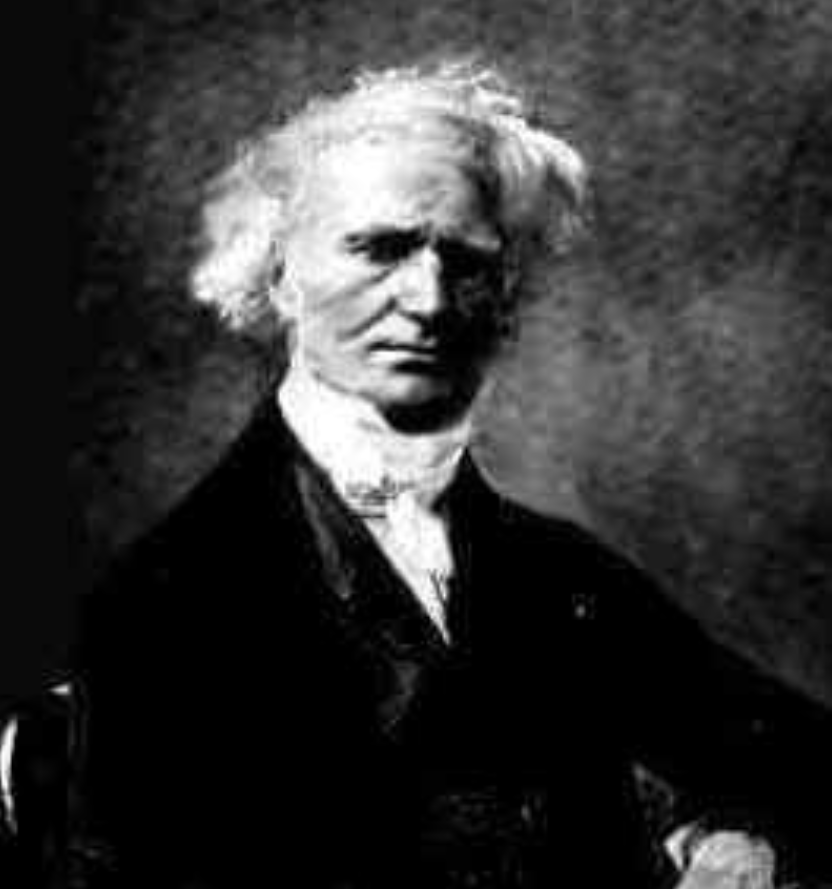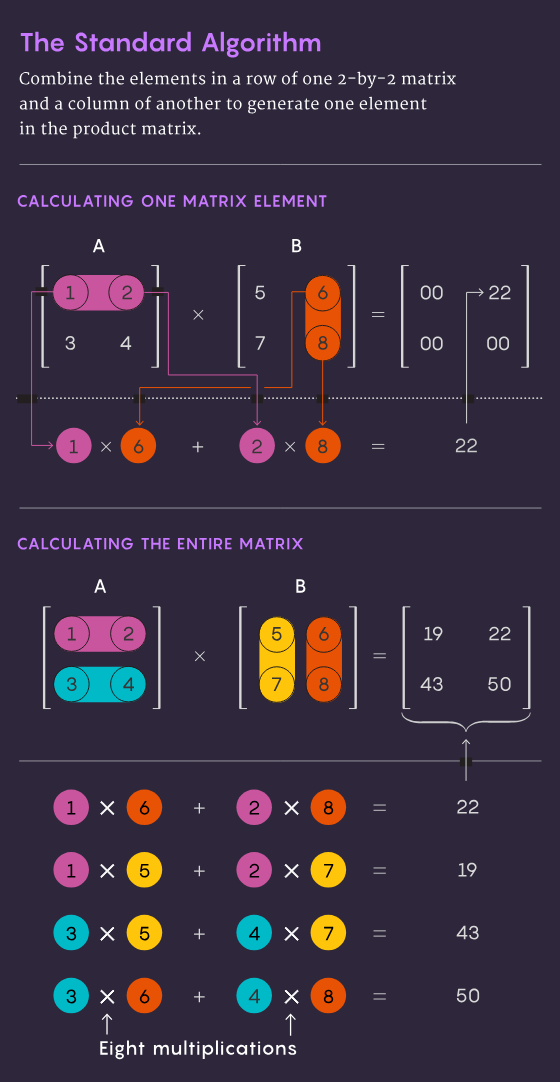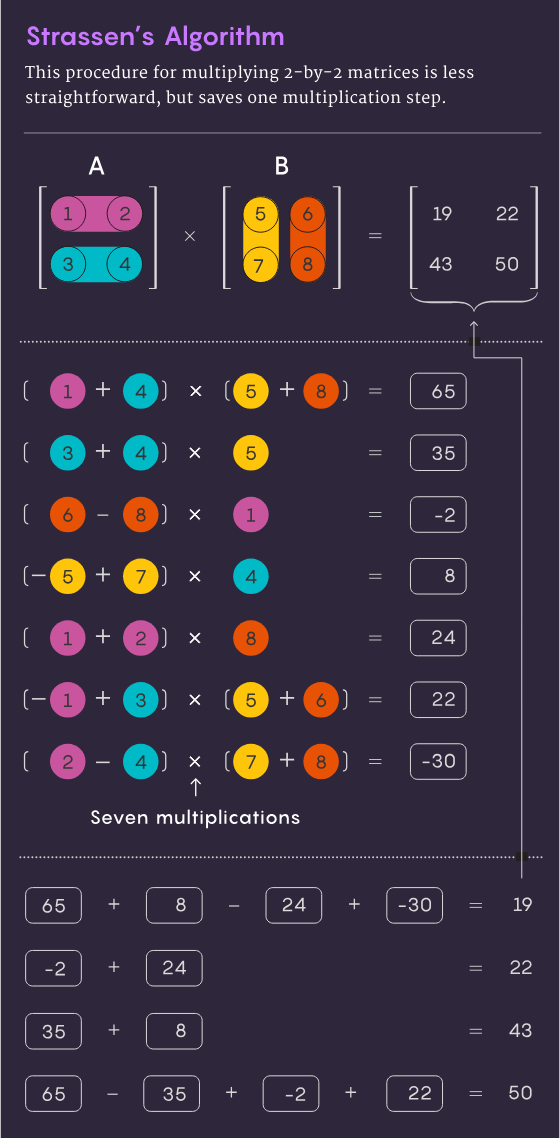 Technology peripherals
Technology peripherals
 AI
AI
 Tsinghua Yao class undergraduates published two works in a row, the biggest improvement in ten years: matrix multiplication is close to the theoretical optimal
Tsinghua Yao class undergraduates published two works in a row, the biggest improvement in ten years: matrix multiplication is close to the theoretical optimal
Tsinghua Yao class undergraduates published two works in a row, the biggest improvement in ten years: matrix multiplication is close to the theoretical optimal
By eliminating "hidden inefficiencies", computer scientists have come up with a new way to multiply large matrices faster than ever before.
Matrix multiplication, as the basic operation of many GPU operators, plays an important role in high-performance computing and is also a key component of applications such as AI. Although the algorithm itself is relatively simple, efforts have been made to optimize it over the years in order to achieve higher speeds. However, the extent of optimization has been somewhat limited.
In the latest issue of Quantum Magazine, we found two papers that can speed up matrix multiplication. In the writing of these two papers, a senior undergraduate student from Yao Class at Tsinghua University actively participated, which brought new prospects for algorithm improvement in this field.

New "singularity" appears in the improvement of matrix multiplication
Computer scientists are a group of very demanding people. What they pursue is not only solving problems, but also achieving goals in the most efficient way.
Take the example of multiplying matrices or arrays of numbers. In 1812, French mathematician Jacques Philippe Marie Binet proposed a set of basic rules that are still taught to students today. This set of rules is widely used, but in recent years some mathematicians have discovered ways to simplify and speed up the process.




####################################################################################################################### French mathematician Jacques Philippe Marie Binet. ############Currently, accelerating the matrix multiplication process has become an intersection of mathematics and computer science. Researchers have been working to improve this process, although progress has been limited in recent decades. François Le Gall, a computer scientist at Nagoya University, points out that numerical improvements to matrix multiplication have been slow and difficult to achieve since 1987. He believes that under the current circumstances, further improving the efficiency of matrix multiplication faces huge challenges and requires more innovation and breakthroughs. Despite the difficulties, scientists are still working tirelessly to seek breakthroughs, hoping to find new methods and techniques to improve the calculation speed and efficiency of matrix multiplication. This shows that matrix multiplication optimization is still a challenging topic and requires the collective efforts of Ran Duan and Renfei Zhou of Tsinghua University and Hongxun Wu of the University of California, Berkeley, to solve this long-term problem recently. Important progress has been made on existing problems, and their research results are presented in detail in an 87-page paper. Le Gall spoke highly of the work of these three researchers. He believed that although the improvement was relatively small, it was an unprecedented conceptual breakthrough. ######This paper was accepted by FOCS 2023, the top conference in the field of computer science. ###############Paper v1 will be released in October 2022, v5 in November 2023. Paper address: https://arxiv.org/abs/2210.10173###### Among them, Duan Ran is an associate professor at the Institute of Interdisciplinary Information at Tsinghua University. His main research directions are graph theory algorithms, data structures, and computing theory. Hongxun Wu is a second-year doctoral student at the University of California, Berkeley, and a graduate of the Yao Class of Tsinghua University. ######Zhou Renfei is a senior undergraduate student in the Yao Class of 2020 at Tsinghua University, majoring in theoretical computer science (TCS). He works primarily on (concise) data structures and fast matrix multiplication, and has broad interests in other areas of TCS such as streaming algorithms, game theory, and online algorithms. ######Previously, Zhou Renfei had published many papers at FOCS/SODA, a top conference in theoretical computer science. ################The paper by three researchers reveals previously unknown and untapped potential sources of improvements that are already bearing fruit. A second paper published in January 2024 (also co-authored by Renfei Zhou) builds on this and shows how matrix multiplication can be further enhanced. ###############Paper address: https://epubs.siam.org/doi/10.1137/1.9781611977912.134###### Harvard University theoretical computer scientist William Kuszmaul responded to this Said that this is a major technological breakthrough and the biggest improvement in matrix multiplication we have seen in more than ten years. #########What issues should be improved in matrix multiplication######
Matrix multiplication may seem like an obscure problem, but it is a basic computational operation. It's incorporated into most of the algorithms people use every day for a variety of tasks, from displaying clearer computer graphics to solving logistics problems in network theory. Just like in other areas of computing, speed is of the essence. Even small improvements could ultimately significantly reduce the time, computing power, and money required. But for now, theorists are mainly interested in figuring out just how fast the process can go.
The traditional method of multiplying two n×n matrices - that is, multiplying the numbers in each row of the first matrix by the numbers in each column of the second matrix - requires n³ independent operations Multiplication operation. For a 2 by 2 matrix, this means 2³, or 8 multiplications.

In 1969, mathematician Volker Strassen discovered a more elegant method that can complete a 2×2 matrix with only 7 multiplication steps and 18 addition steps. multiplication operation. Two years later, computer scientist Shmuel Winograd showed that 7-step multiplication was indeed the absolute minimum for a 2×2 matrix.

Strassen used the same idea to show that all larger n×n matrices can also be multiplied in fewer than n3 steps. A key element in this strategy involves a procedure called decomposition: decomposing a large matrix into smaller submatrices, which may end up being as small as 2×2 or even 1×1 (just a single number).
The reason for breaking giant arrays into small pieces is quite simple. Virginia Vassilevska Williams, a computer scientist at MIT, said: "For a large matrix (such as a 100×100 matrix), it is difficult for humans to think of the most The best algorithm." Even the 3-by-3 matrix is not completely solved yet. "However, one can use fast algorithms that have been developed for small matrices to obtain fast algorithms for larger matrices."
The researchers determined that the key to speed lies in reducing the number of multiplication steps, moving the exponent from n3 as much as possible (traditional method) lowered. The lowest possible value n² is basically the time it takes to write the answer. Computer scientists call this exponent Ω, or ω. nω is the minimum number of steps required to successfully multiply two n×n matrices as n gets larger. Zhou Renfei, who is also a co-author of the January 2024 paper, said: "The focus of this work is to see how close you can get to 2 and whether it can be achieved theoretically."
Laser Method
In 1986, Strassen achieved another major breakthrough when he introduced the laser method of matrix multiplication. Strassen used this to determine an upper limit for ω of 2.48. Although the method is just one step in large matrix multiplication, it is one of the most important because researchers are constantly improving it.
A year later, Winograd and Don Coppersmith introduced a new algorithm that perfectly complemented the laser method. This combination of tools was used in almost all subsequent research on accelerating matrix multiplication.
Here’s a simplified way to see how these different elements fit together. Let's start with two large matrices A and B and multiply them. First, you break them into many smaller submatrices, sometimes called chunks. Next, you can use Coppersmith and Winograd's algorithms as a guide for processing and ultimately assembling these blocks. "It tells me what to multiply, what to add, and which elements are where in the product matrix C," Vassilevska Williams said. "It's just a 'recipe' for building C from A and B."
However, there is a problem: sometimes you get blocks with common elements. Retaining these common elements would be equivalent to counting these elements twice, so at some point, these overlaps need to be eliminated. The researchers solved this problem by "killing" the blocks they were in - setting their components to zero to remove them from the calculation.

## Virginia Vassilevska Williams was part of a team that improved a new method for matrix multiplication and she came up with the fastest method currently available.
This is where Strassen’s laser method finally comes into play. "The laser method is usually very effective and often finds a good way to eliminate overlapping sub-blocks," Le Gall said. After the laser has eliminated all overlap, you can construct the final product matrix C.Combining these various techniques results in an algorithm that multiplies two matrices with as few total multiplications as possible, at least in theory. The laser method is not intended for practical applications; it is just an ideal way of thinking about matrix multiplication. Zhou Renfei said, "We have never run this method on a computer, we analyze it."
It is this analysis that has led to ω's biggest improvement in more than ten years.
The "hidden loss" discovered
In the first paper "Faster Matrix Multiplication via Asymmetric Hashing" by Duan Ran, Zhou Renfei and Hongxun Wu, they showed , the process of Strassen's algorithm can be greatly accelerated. This is all thanks to a concept they call "hidden loss." Zhou Renfei said that the concept was deeply hidden in previous analysis and was the result of inadvertently eliminating too many blocks.
The laser method works by marking overlapping blocks as garbage and scheduling them for processing, while other blocks are considered valuable and will be saved. However, the selection process is somewhat random. In fact, blocks marked as garbage may end up being useful.
This isn’t entirely surprising, but by examining many random selections, Duan Ran’s team determined that the laser method systematically underestimates the value of blocks, so more blocks should be saved and fewer thrown away. And, as is often the case, less waste translates into greater efficiency.
Regarding Duan Ran’s team’s approach, Le Gall believes that “more blocks can be retained without overlapping. This approach achieves a faster matrix multiplication algorithm.”
It proves this After this kind of loss existed, Duan Ran's team modified the way of laser marking blocks, thus greatly reducing waste. They set a new cap on ω around 2.371866, which is an improvement over the 2.3728596 cap set by Josh Alman and Vassilevska Williams in 2020.
This may seem like a small change, lowering the upper limit by about 0.001, but it's the biggest improvement scientists have seen since 2010. In comparison, Vassilevska Williams and Alman's 2020 results improved by just 0.00001 from their previous results.

Of course, the most exciting thing for researchers was not just the new record itself, which didn't last long. In fact, this paper reveals a new avenue for improvement that had previously gone completely unnoticed.
Le Gall says everyone has relied on the same laser method for nearly four decades. With the emergence of papers by three researchers including Duan Ran, we can do better.
Therefore, the January 2024 paper co-authored by Zhou Renfei improved this new method and further reduced the hidden loss. They further raised the upper limit of ω, lowering it to 2.371552.

Researchers also used the same method to improve the multiplication process of rectangular (n×m) matrices, which has widespread use in graph theory, machine learning, and other fields. application.
Some further progress along these directions is almost certain, but there are limits. In 2015, Le Gall and two co-authors showed that the current method, namely the laser method, coupled with the method of Coppersmith and Winograd, was unable to obtain ω below 2.3078.
Le Gall said: "To improve further, you have to improve on the original method of Coppersmith and Winograd, which has not really changed since 1987." But so far, No one has come up with a better way yet. Maybe not at all.
Zhou Renfei said: "Improving ω is actually part of understanding this problem. If we can understand this problem well, we can design better algorithms. However, people's understanding of this ancient problem is still unclear. At a very early stage."
Original link:
https://www.quantamagazine.org/new-breakthrough-brings- matrix-multiplication-closer-to-ideal-20240307/
The above is the detailed content of Tsinghua Yao class undergraduates published two works in a row, the biggest improvement in ten years: matrix multiplication is close to the theoretical optimal. For more information, please follow other related articles on the PHP Chinese website!

Hot AI Tools

Undresser.AI Undress
AI-powered app for creating realistic nude photos

AI Clothes Remover
Online AI tool for removing clothes from photos.

Undress AI Tool
Undress images for free

Clothoff.io
AI clothes remover

AI Hentai Generator
Generate AI Hentai for free.

Hot Article

Hot Tools

Notepad++7.3.1
Easy-to-use and free code editor

SublimeText3 Chinese version
Chinese version, very easy to use

Zend Studio 13.0.1
Powerful PHP integrated development environment

Dreamweaver CS6
Visual web development tools

SublimeText3 Mac version
God-level code editing software (SublimeText3)

Hot Topics
 1382
1382
 52
52
 The author of ControlNet has another hit! The whole process of generating a painting from a picture, earning 1.4k stars in two days
Jul 17, 2024 am 01:56 AM
The author of ControlNet has another hit! The whole process of generating a painting from a picture, earning 1.4k stars in two days
Jul 17, 2024 am 01:56 AM
It is also a Tusheng video, but PaintsUndo has taken a different route. ControlNet author LvminZhang started to live again! This time I aim at the field of painting. The new project PaintsUndo has received 1.4kstar (still rising crazily) not long after it was launched. Project address: https://github.com/lllyasviel/Paints-UNDO Through this project, the user inputs a static image, and PaintsUndo can automatically help you generate a video of the entire painting process, from line draft to finished product. follow. During the drawing process, the line changes are amazing. The final video result is very similar to the original image: Let’s take a look at a complete drawing.
 Topping the list of open source AI software engineers, UIUC's agent-less solution easily solves SWE-bench real programming problems
Jul 17, 2024 pm 10:02 PM
Topping the list of open source AI software engineers, UIUC's agent-less solution easily solves SWE-bench real programming problems
Jul 17, 2024 pm 10:02 PM
The AIxiv column is a column where this site publishes academic and technical content. In the past few years, the AIxiv column of this site has received more than 2,000 reports, covering top laboratories from major universities and companies around the world, effectively promoting academic exchanges and dissemination. If you have excellent work that you want to share, please feel free to contribute or contact us for reporting. Submission email: liyazhou@jiqizhixin.com; zhaoyunfeng@jiqizhixin.com The authors of this paper are all from the team of teacher Zhang Lingming at the University of Illinois at Urbana-Champaign (UIUC), including: Steven Code repair; Deng Yinlin, fourth-year doctoral student, researcher
 Posthumous work of the OpenAI Super Alignment Team: Two large models play a game, and the output becomes more understandable
Jul 19, 2024 am 01:29 AM
Posthumous work of the OpenAI Super Alignment Team: Two large models play a game, and the output becomes more understandable
Jul 19, 2024 am 01:29 AM
If the answer given by the AI model is incomprehensible at all, would you dare to use it? As machine learning systems are used in more important areas, it becomes increasingly important to demonstrate why we can trust their output, and when not to trust them. One possible way to gain trust in the output of a complex system is to require the system to produce an interpretation of its output that is readable to a human or another trusted system, that is, fully understandable to the point that any possible errors can be found. For example, to build trust in the judicial system, we require courts to provide clear and readable written opinions that explain and support their decisions. For large language models, we can also adopt a similar approach. However, when taking this approach, ensure that the language model generates
 From RLHF to DPO to TDPO, large model alignment algorithms are already 'token-level'
Jun 24, 2024 pm 03:04 PM
From RLHF to DPO to TDPO, large model alignment algorithms are already 'token-level'
Jun 24, 2024 pm 03:04 PM
The AIxiv column is a column where this site publishes academic and technical content. In the past few years, the AIxiv column of this site has received more than 2,000 reports, covering top laboratories from major universities and companies around the world, effectively promoting academic exchanges and dissemination. If you have excellent work that you want to share, please feel free to contribute or contact us for reporting. Submission email: liyazhou@jiqizhixin.com; zhaoyunfeng@jiqizhixin.com In the development process of artificial intelligence, the control and guidance of large language models (LLM) has always been one of the core challenges, aiming to ensure that these models are both powerful and safe serve human society. Early efforts focused on reinforcement learning methods through human feedback (RL
 arXiv papers can be posted as 'barrage', Stanford alphaXiv discussion platform is online, LeCun likes it
Aug 01, 2024 pm 05:18 PM
arXiv papers can be posted as 'barrage', Stanford alphaXiv discussion platform is online, LeCun likes it
Aug 01, 2024 pm 05:18 PM
cheers! What is it like when a paper discussion is down to words? Recently, students at Stanford University created alphaXiv, an open discussion forum for arXiv papers that allows questions and comments to be posted directly on any arXiv paper. Website link: https://alphaxiv.org/ In fact, there is no need to visit this website specifically. Just change arXiv in any URL to alphaXiv to directly open the corresponding paper on the alphaXiv forum: you can accurately locate the paragraphs in the paper, Sentence: In the discussion area on the right, users can post questions to ask the author about the ideas and details of the paper. For example, they can also comment on the content of the paper, such as: "Given to
 A significant breakthrough in the Riemann Hypothesis! Tao Zhexuan strongly recommends new papers from MIT and Oxford, and the 37-year-old Fields Medal winner participated
Aug 05, 2024 pm 03:32 PM
A significant breakthrough in the Riemann Hypothesis! Tao Zhexuan strongly recommends new papers from MIT and Oxford, and the 37-year-old Fields Medal winner participated
Aug 05, 2024 pm 03:32 PM
Recently, the Riemann Hypothesis, known as one of the seven major problems of the millennium, has achieved a new breakthrough. The Riemann Hypothesis is a very important unsolved problem in mathematics, related to the precise properties of the distribution of prime numbers (primes are those numbers that are only divisible by 1 and themselves, and they play a fundamental role in number theory). In today's mathematical literature, there are more than a thousand mathematical propositions based on the establishment of the Riemann Hypothesis (or its generalized form). In other words, once the Riemann Hypothesis and its generalized form are proven, these more than a thousand propositions will be established as theorems, which will have a profound impact on the field of mathematics; and if the Riemann Hypothesis is proven wrong, then among these propositions part of it will also lose its effectiveness. New breakthrough comes from MIT mathematics professor Larry Guth and Oxford University
 Axiomatic training allows LLM to learn causal reasoning: the 67 million parameter model is comparable to the trillion parameter level GPT-4
Jul 17, 2024 am 10:14 AM
Axiomatic training allows LLM to learn causal reasoning: the 67 million parameter model is comparable to the trillion parameter level GPT-4
Jul 17, 2024 am 10:14 AM
Show the causal chain to LLM and it learns the axioms. AI is already helping mathematicians and scientists conduct research. For example, the famous mathematician Terence Tao has repeatedly shared his research and exploration experience with the help of AI tools such as GPT. For AI to compete in these fields, strong and reliable causal reasoning capabilities are essential. The research to be introduced in this article found that a Transformer model trained on the demonstration of the causal transitivity axiom on small graphs can generalize to the transitive axiom on large graphs. In other words, if the Transformer learns to perform simple causal reasoning, it may be used for more complex causal reasoning. The axiomatic training framework proposed by the team is a new paradigm for learning causal reasoning based on passive data, with only demonstrations
 The first Mamba-based MLLM is here! Model weights, training code, etc. have all been open source
Jul 17, 2024 am 02:46 AM
The first Mamba-based MLLM is here! Model weights, training code, etc. have all been open source
Jul 17, 2024 am 02:46 AM
The AIxiv column is a column where this site publishes academic and technical content. In the past few years, the AIxiv column of this site has received more than 2,000 reports, covering top laboratories from major universities and companies around the world, effectively promoting academic exchanges and dissemination. If you have excellent work that you want to share, please feel free to contribute or contact us for reporting. Submission email: liyazhou@jiqizhixin.com; zhaoyunfeng@jiqizhixin.com. Introduction In recent years, the application of multimodal large language models (MLLM) in various fields has achieved remarkable success. However, as the basic model for many downstream tasks, current MLLM consists of the well-known Transformer network, which



